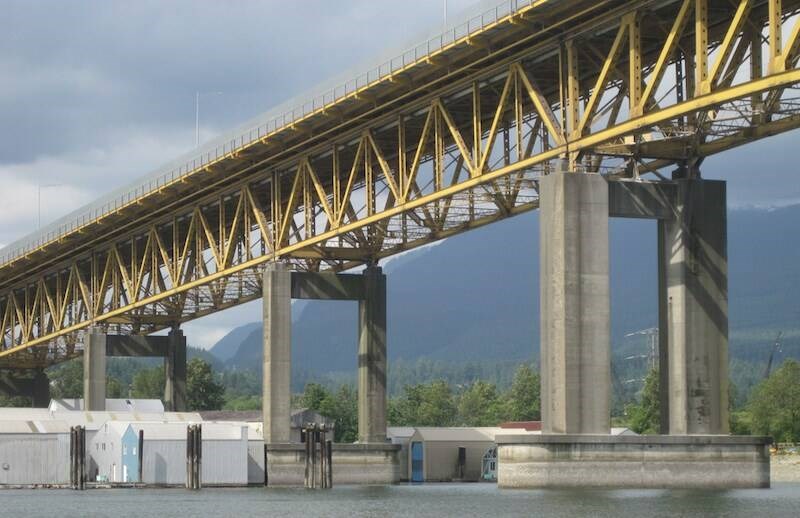In 2018, I made the call for light rail transit (LRT) to reach the North Shore within a decade.
Six years later, I am back to hold our leaders to account for their inaction, amidst ongoing gridlock, a lower quality of life and negative economic effects, including the loss of major employers. We must think bigger than current promises of more buses and car lanes to solve these problems.
Without a competitive transit alternative, our bridges hit the “tipping point” for mass congestion a decade ago, inflicting chaos on local roads and bus routes. In response, my team released research findings supporting the viability of a route across the North Shore connecting to SkyTrain in Burnaby.
Our subsequent findings released in 2020 compared an Ambleside to Metrotown (via Ironworkers Bridge) LRT route with competing corridors along Broadway to UBC, and in Surrey, where subway/SkyTrain is planned. Results indicated that development conditions on the North Shore and in Burnaby are conducive to high levels of rapid transit ridership and mode shift away from the car, while significantly exceeding the potential of the competing corridors.
For example, there were 225,000 residents/jobs and 353 tall buildings in walking distance (400 metres) of the Ambleside-Metrotown corridor, as compared to 100,000 residents/jobs and 68 tall buildings on the Arbutus-UBC corridor, and less than 50,000 residents/jobs and 35 tall buildings on the Surrey-Langley corridor. Recent studies indicate that “rail” transit to the North Shore could attract 120,000 daily users, moving nearly one-third of all trips across Burrard Inlet, and removing 50,000 vehicles from the road network, while generating economic benefits of $500 million per year and improving access to 175,000 jobs.
The competing projects would have far less impact. Yet, for political reasons, our leaders have decided to prioritize costly SkyTrain in Surrey ($6 billion) and subways in Vancouver (potentially $8-12 billion for UBC) while offering the North Shore limited bus rapid transit (it is technically impossible to implement full BRT, as promised).
BRT will have insufficient capacity, uncompetitive travel times, reduced reliability and comfort, fewer economic benefits and won’t remove many drivers. As witnessed in Ottawa (38 years) and Toronto-York (20 years and counting), promises of future rail will be deferred for decades once BRT opens, as politicians move on to demands elsewhere. The opportunity for transformative change will be lost if we follow this path and, like the Lower Lynn-Highway 1 upgrade, big promises will achieve inadequate outcomes. Buy into BRT now and you can kiss rail transit goodbye until 2050!
In 2022, I made another call for North Shore LRT to be prioritized by all levels of government and proposed a conceptual plan for an advanced form of LRT seen in Calgary and Seattle. To maintain affordability but address capacity and travel time concerns, this hybrid runs mostly in segregated lanes at surface to minimize intrusion, but strategically places SkyTrain-like elevated sections in congested areas to maximize efficiencies (eg. Park Royal to Capilano Road; east of Lonsdale to PNE; Brentwood to BCIT). In light of recent provincial density requirements near transit, I also advised our leaders to consider running the line one block of south of Marine Drive and Hastings Street to maximize operational efficiency, to create new low rise affordable housing on 15th Street and Pender Street, respectively (as North Van City did on East Third), and to avoid never-ending battles associated with the removal of traffic and parking lanes along the main arterials (which will hinder any BRT plan).
Bold and transformative, advanced LRT would reliably move riders from West Van to Metrotown in about half an hour, while maintaining cost effectiveness by avoiding the full grade separation requirements of SkyTrain (and subsequent tunnels needed beneath the Marine Drive/Lonsdale/Hastings areas). The savings add up quickly when 65-70 per cent of the route only costs $100-150 million per kilometre (recent Canadian average for surface LRT) as opposed to $400 million per kilometre for elevated guideways, and $1.25-1.75 billion per kilometre for subway (recent costs in Toronto/Montreal).
Addressing the costliest part of the project, a multi-use bridge could attract several pools of money (federal/provincial transit and goods movement budgets) by including space for light rail, freight rail, HOV lanes and cycling, prioritizing the movement of transit, families and cargo over single occupant drivers. While HOV lanes could be extended to Taylor Way immediately, full replacement of the Ironworkers Bridge would be deferred for several decades.
I implore voters to push our leaders to fund the preparation of a business case for this cost effective and transformative advanced light rail proposal. We cannot wait until 2050 for a real solution!
Dr. Stephan Nieweler is a planning & transportation researcher in the geography department at Simon Fraser University. Before returning to academia, he was involved in planning rapid transit systems while based in the U.K., India, Toronto and at TransLink in Vancouver. He grew up in the District of North Vancouver and lived in Lower Lonsdale for many years.



